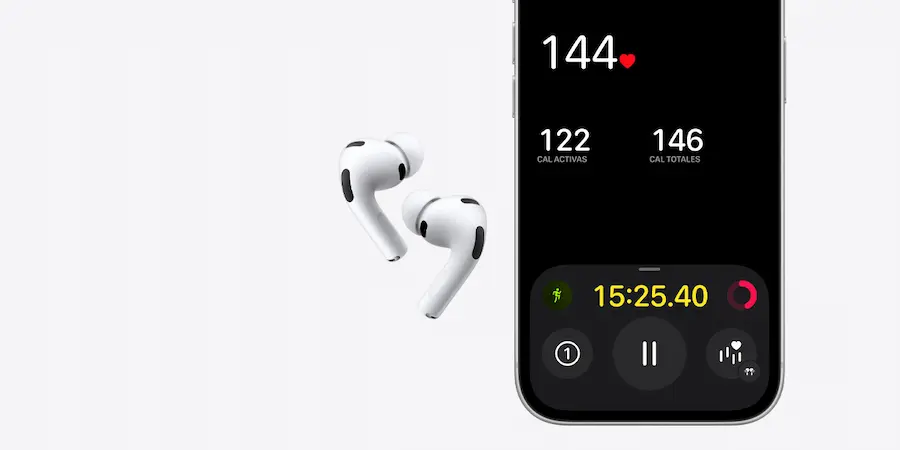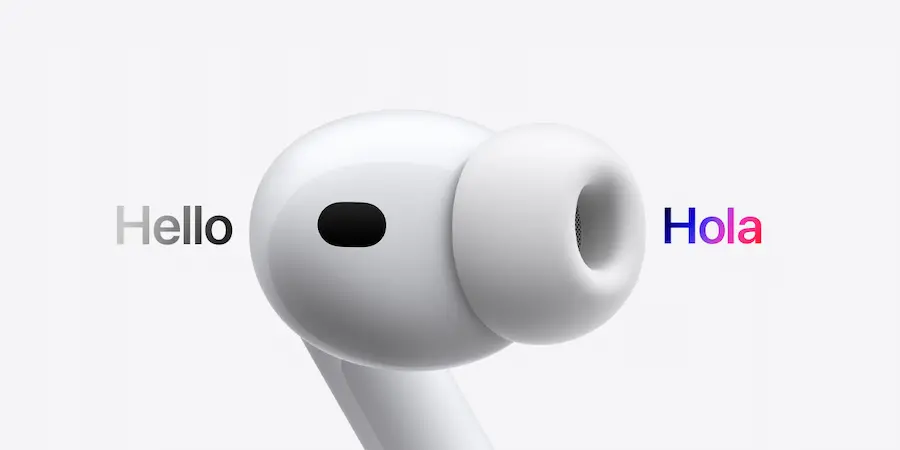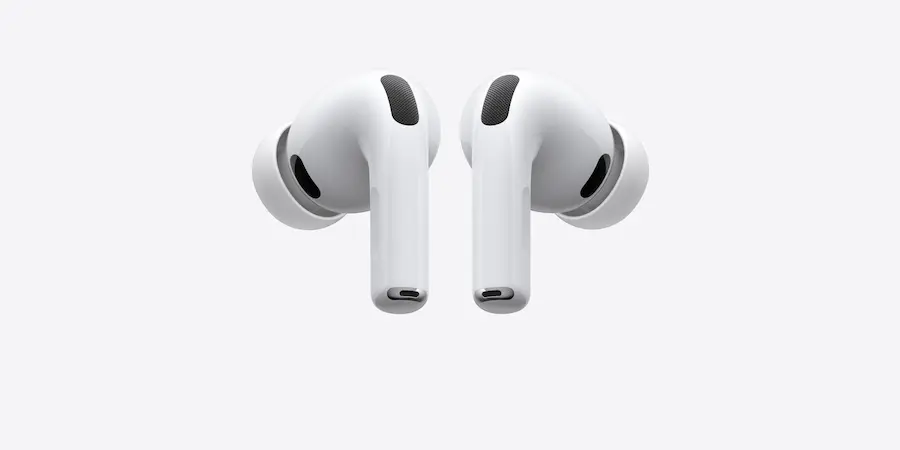Apple has released the third generation of its flagship earphones and, if you’ve had your AirPods Pro 2 for years, the question answers itself: are there real reasons to upgrade? The short answer is that yes, there are strong arguments, because this evolution isn’t just cosmetic and arrives with tangible improvements in noise cancellation, health, durability and battery life per charge, although it also brings some nuances to consider if you do short sessions and depend heavily on the case.
Next-level noise cancellation and audio improvements
The big selling point of the AirPods Pro 3 is active noise cancellation that, according to Apple, doubles the capability of the Pro 2 and quadruples that of the first Pro; that’s not a random figure, especially if you spend the day among airplane engines or noisy cafés, because that background hum that used to be a nuisance now fades very noticeably. The brand even claims to offer the best in-ear noise cancellation on the market, a statement that points directly at the usual heavyweights like Sony and Bose.
This leap doesn’t come out of nowhere: there are new ultra-low-noise microphones that capture the environment more cleanly so the cancellation algorithms (yes, there’s a lot of software magic here) work with cleaner data, and the silicone tips now include a thin layer of foam, improving passive sealing before the electronics kick in, which translates into fewer sound leaks from the first second. The acoustic opening has also been redesigned and the shape and angle adjusted, a detail that helps sustain that extra isolation and better project the audio.
If you like alternating between total isolation and hearing the surroundings, there’s more good news: transparency mode now holds up for longer sessions per charge, so you can have conversations or perceive traffic without taking the earbuds off and on every two minutes.
Sport and health without a watch: PPG, sensors and IP57 resistance
The second big block of novelties comes with a very fitness-focused approach. The AirPods Pro 3 debut a tiny heart-rate sensor based on photoplethysmography (PPG) that emits infrared light at high frequency to read variations in blood flow; combined with the earbuds’ gyroscope and accelerometers, and the iPhone’s GPS, it allows you to record up to 50 types of workouts without needing to wear an Apple Watch, something especially interesting if the watch bothers you during yoga, climbing or swimming but you don’t want to give up clean data in Apple Health. Isn’t it exactly the freedom many of us asked for in high-end in-ears?

Additionally, the design has been refined with a more compact case, a more angled fit and shorter stems, improvements that are noticeable both in comfort — especially if you have a narrow ear canal — and in stability during movement, so those micro-adjustments that the Pro 2 sometimes suffered mid-run are largely mitigated. And if you do cardio in the rain or sweat a lot, the jump from IP54 to IP57 in water and sweat resistance is not minor: you can now rinse them after an intense session or keep running if a downpour hits without worrying about risking the earbuds.
Smarter case, battery with caveats and price
The case also levels up thanks to the U2 chip with Ultra Wideband, a technological reference we’ve admired for years for its precision, and here it makes Find My much more accurate when the case decides to hide in the sofa; it also adopts a touch pairing button inherited from the AirPods 4, so we say goodbye to the physical button that ended up wearing out with heavy use.
On battery life, Apple has moved the needle in two directions. The good: the earbuds themselves last up to 8 hours of playback with active noise cancellation versus the 6 hours of the Pro 2, a 33% increase that’s appreciated on flights or long focus sessions; in transparency mode, the jump is even more generous, up to 10 hours versus 6, ideal if you prefer constant awareness without sacrificing battery. The caveat comes when looking at the total with the case: now you’re left with about 24 hours with ANC, while the Pro 2 stretched to about 30 hours. In practice, if you do many short, frequent listens, the Pro 2 pattern may fit better, whereas if you prefer marathons per charge, the Pro 3 reward you more in each run.

On the practical side, both models share a launch price of 249 euros; the AirPods Pro 3 can already be pre-ordered and start shipping on September 19. Apple has removed the Pro 2 from its store, although they still show up at retailers like Amazon, a temptation if you can’t wait and don’t need the new features. Note that the Pro 2 continue to receive software updates, and Apple itself is enabling Live Translation to keep them up to date with real-time conversation translation features, a perfect example of how software can extend the hardware’s lifespan.
So, what do we do? If your AirPods Pro 2 are in great shape and cover your needs, there’s no rush to run out and buy; they’re still excellent. But if you travel often and are obsessed with silence, if you exercise and appreciate wrist-free heart rate and the extra durability, or if the Pro 2 ergonomics never quite fit you, the AirPods Pro 3 represent a meaningful evolution that justifies the change compared to discounted Pro 2. In other words, it’s the typical update that sounds iterative… until you try it and notice how the details — stronger ANC, PPG sensors, UWB for finding the case — make a difference day to day, like when we moved from the first Touch ID to Face ID: it’s not mandatory, but once you get used to it, it’s hard to go back.

